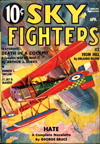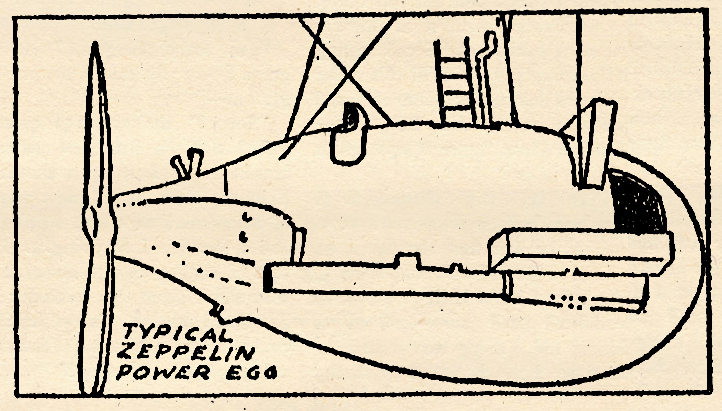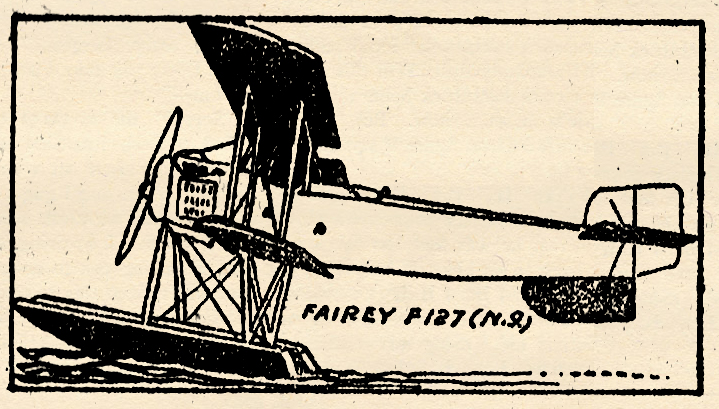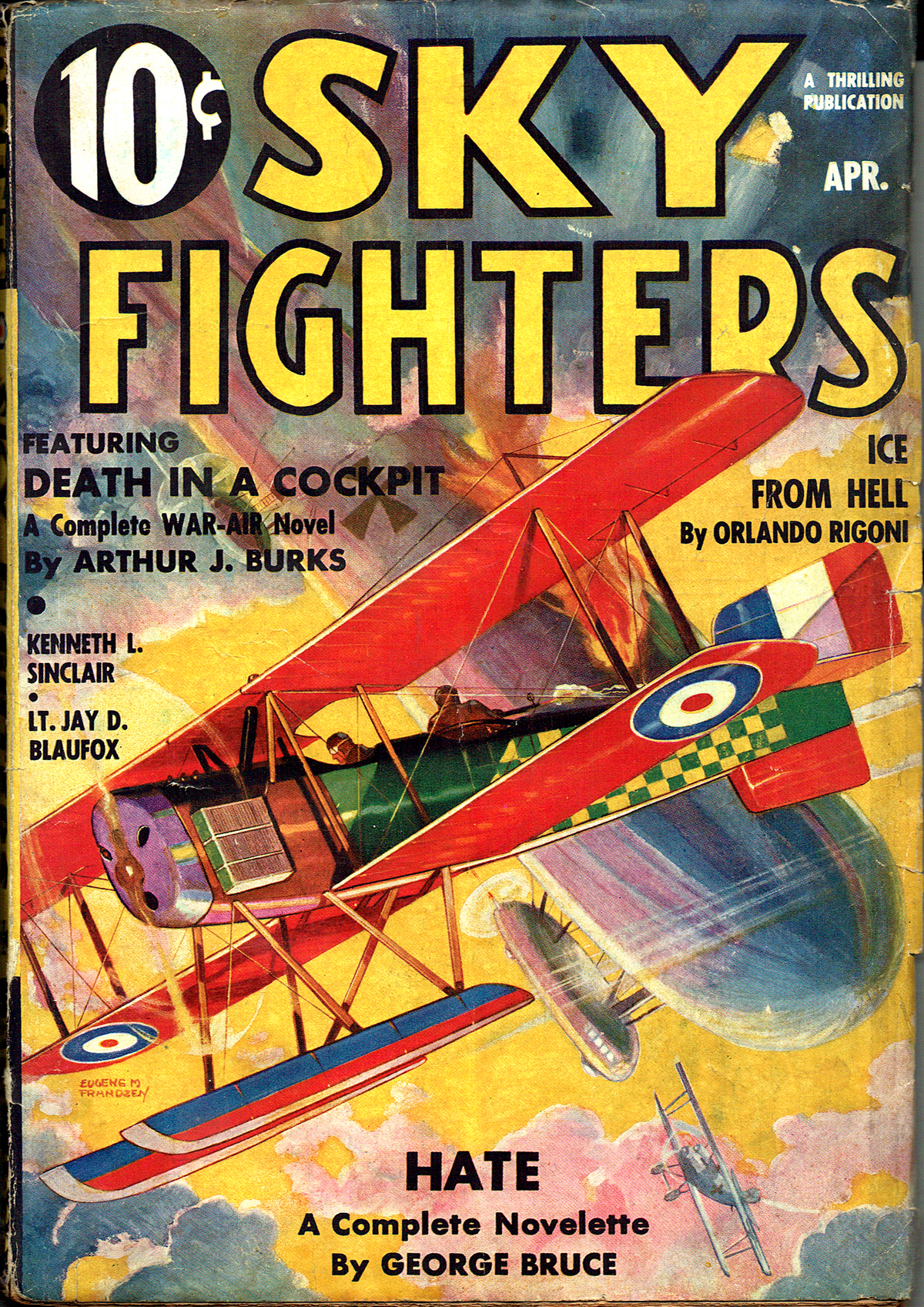“Sky Birds, December 1934″ by C.B. Mayshark
THIS May we’re once again celebrating the genius that is C.B. Mayshark! Every Monday in May we’ll be featuring one of his great covers—in order to get an extra cover in, we’re starting a few days early! Mayshark took over the covers duties for Sky Birds with the July 1934 and would paint all the remaining covers until it’s last issue in December 1935. At the start of his run, Sky Birds started featuring a different combat maneuver of the war-time pilots. The lower corner presenting a play-by-play of that month’s maneuver with the remainder of the cover illustrating it. For December 1934 issue Mayshark gives us “The Kite Killer Escapes!”
Combat Maneuvers of War-Time Pilots:
The Kite Killer Escapes
DURNG the war, balloon 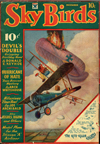 strafing was one of the most hazardous and thrilling aerial sports in which a pilot could take part. And before the shells stopped bursting over the ruins of France, most of the Allied pilots had been initiated into the gameful art of balloon firing.
strafing was one of the most hazardous and thrilling aerial sports in which a pilot could take part. And before the shells stopped bursting over the ruins of France, most of the Allied pilots had been initiated into the gameful art of balloon firing.
Of the few who attained fame in this branch of the air offensive, perhaps the most renowned is Willy Coppens. Balloons were his meat, and he attacked always with such fury and determination that the enemy defense ships usually went scuttling home, their pilots satisfied with the conclusion that here was a devil not to be denied by the German Imperial Air Corps.
At the time of his activity on the Western Front, Coppens was a very exacting and painstaking individual. He planned every engagement from the moment he first sighted his enemy, and he never deviated from his own original systemaof precautionary safety measures, which on more than one occasion tricked his enemy into foolhardy exposure and certain death. But Coppens did more than plan his fights. He planned his escapes, when a quick getaway was necessary, and quick getaways were necessary when balloon strafing was the business at hand.
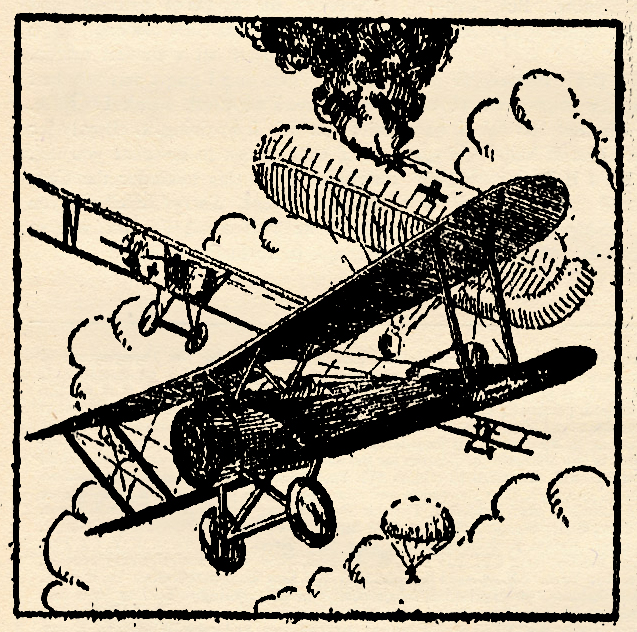
On this month’s cover, we have shown you how the Belgian ace employed skill and cunning to effect his escape from the bullet-riddled air around the German kite balloon which he has just fired. As the Belgian makes a bee-line for home after the balloon has begun to burn, two Fokker D-7′a swoop down on him, determined to cut off his escape and avenge the defeat of their two fallen comrades.
The Belgian finds himself in a tight spot, but instead of losing his head and fighting blindly, he makes a wide turn and heads back towards the burning balloon. The two Germans stick with him.
As the trio nears the mass of flame and smoke, the Germans become puzzled and a little leery of their reckless enemy. Can it be that this fool is going to lead them to destruction? But the Belgian has his eyes open, and he is laughing up his sleeve. Suddenly the cable which anchors the balloon to the ground looms up. The Belgian succeeds in dodging it, but one of the Fokkers is not so lucky. The German plows headlong into the atrands of steel, the propeller splintering into a thousand fragments. The impact is so terrific that the burning balloon lurches downward as the Fokker sticks fast to the cable.
As the Belgian ducks around the front end of the balloon, the remaining German skids off to the right, expecting to pick up his enemy at the tail end of the burning craft. But the Belgian, piloting his ship almost mochanically, goes up in a steep climb. Gaining altitude, he slides over into the loose smoke some five hundred feet above the doomed balloon, settling there momentarily while his wide-eyed adversary frantically combs the hot air around the falling balloon. Suddenly the Belgian darts out into the open, and with his advantage of altitude, it is impossible for the Hun to reach him. Thus the Kite-Killer escapes.
The ship carrying the Belgian cocardes is a French-built Hanriot single-seater scout. Very few of these ships were built, although their performance was good and their response to the controls was as active as that of the Camel. It was powered with a 130-h.p. Clerget rotary motor. The curious arrangement of the center-section struts is the most distinctive feature of the plane.
The two German ships, as has been said, are the well-known Fokker D-7’s, and the balloon is a Perseval type observation bag with stabilizing flaps on either side.
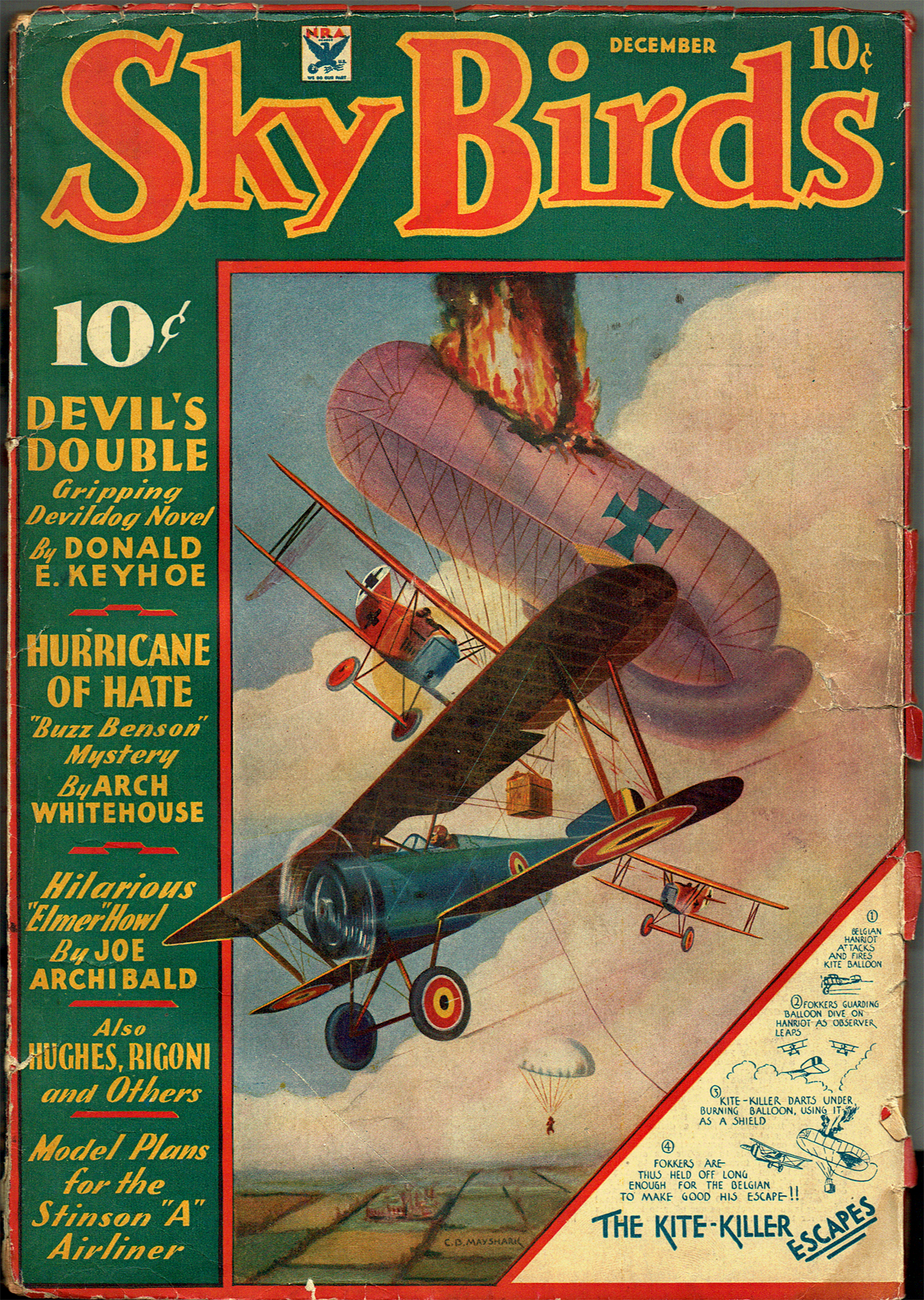
Sky Birds, December 1934 by C.B. Mayshark
(Combat Maneuvers of War-Time Pilots: The Story Behind This Month’s Cover)







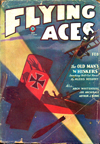
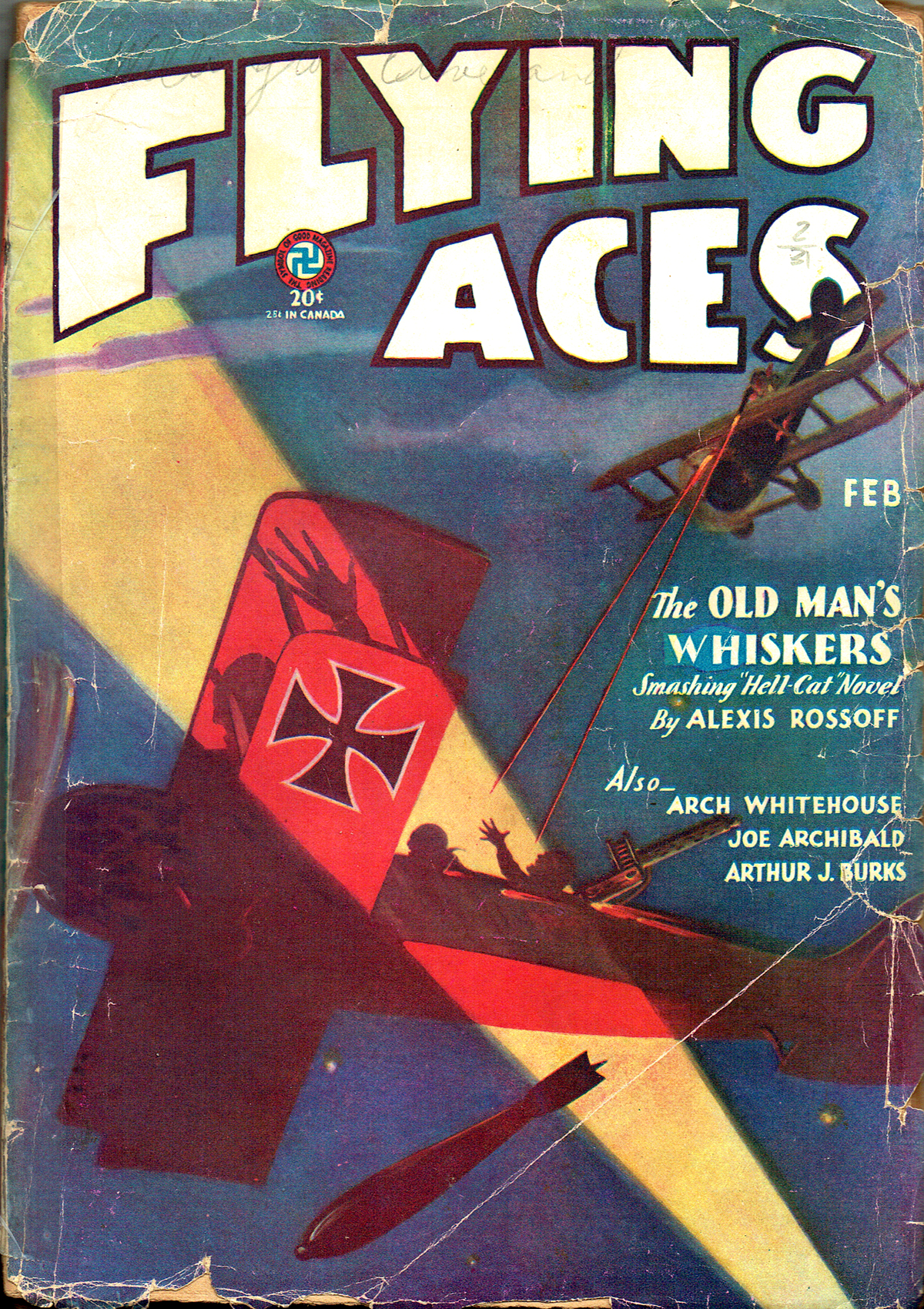
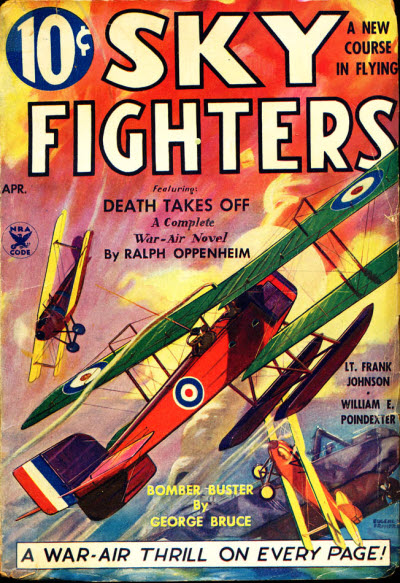 Silent Orth had made an enviable record, in the face of one of the worst beginnings—a beginning which had been so filled with boasting that his wingmates hadn’t been able to stand it. But Orth hadn’t thought of all his talk as boasting, because he had invariably made good on it. However, someone had brought home to him the fact that brave, efficient men were usually modest and really silent, and he had shut his mouth like a trap from that moment on.
Silent Orth had made an enviable record, in the face of one of the worst beginnings—a beginning which had been so filled with boasting that his wingmates hadn’t been able to stand it. But Orth hadn’t thought of all his talk as boasting, because he had invariably made good on it. However, someone had brought home to him the fact that brave, efficient men were usually modest and really silent, and he had shut his mouth like a trap from that moment on.

